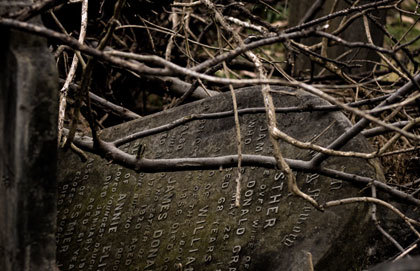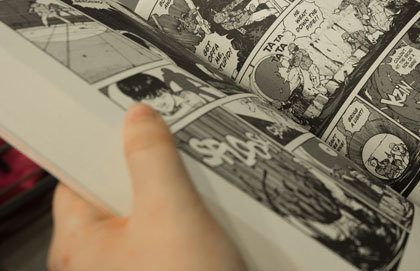This observation, seemingly a delusional remark made by the dying protagonist of the 1997 novel Strangers and Sojourners, is actually Canadian author Michael D. O’Brien’s master stroke that emphasizes the salvation of his heroine, Anne Delaney. This is one of those books that, revisited many years after a first reading, yields up new treasures. Through his exquisitely sensitive portrayal of a well-educated British lady turned bush wife in the interior of British Columbia at the turn of the 20th century, O’Brien illustrates the change possible in any life with the help of God’s grace. The theme of pilgrimage, of being a “stranger and sojourner” on this earth, is shown to consist in constant attention and devotion to the little things of creation and in loving, creative relationships with other pilgrims. O’Brien’s life-spanning portrait of Anne illustrates the suffering that shapes her into a citizen of the promised land of Heaven. His convictions are evident in his choice of language and themes.
Anne Ashton’s marriage to Irish settler Stephen Delaney is central to the story, but her spiritual growth is the focal point. Readers of O’Brien’s other Children of the Last Days novels will realize that he focuses on Anne because she is the matriarch of a line of “truth sayers”: sensitive, but also educated and articulate in a way that Anne’s strong, silent husband is not. O’Brien implies that there is war in Heaven over the soul of this woman, whose very proficiency with words could tip her and her audience in one direction or the other. Stephen Delaney, with his God-fearing interior solitude and mystical, Irish faith, appears in the novel as Anne’s principal interlocutor: he shows her that words alone are not enough and that where they end, mystery begins.
O’Brien’s craftsmanship can be seen in his imagery, the words serving the Divine Word. Arresting metaphors throughout the novel surprise the attentive reader into new realizations of truth. For example, when the self-possessed Anne Ashton arrives in the B.C. Interior to teach settlers’ children, she is “a velvet woman,” “a creation of porcelain flowers,” and is “ravished” by the children’s eyes. Her presence as art, unsuited to her new surroundings, contrasts with the presence of the rough and real Mrs. Turid Gunderberg, who is later described as “something rooted, as homely as turnips, and just as tough.” At the end of the novel, Stephen Delaney reflects on flesh that “had been the green grass blowing” and on “cold red hands on the nets.” The words that might astonish us most, however, are the elemental “man” and “woman,” which, by disguising Stephen and Anne as basic archetypes, paradoxically reveal them all the more. Through their being Everyman and Everywoman, they teach without compromising their identities. For O’Brien, every created thing is a word from the Divine, and he finds such words particularly in persons, unique in face and name. The names Anne Ashton and Stiofain O Dulaine have deep cultural meaning for the bearers’ identities.
Anne’s identity is repeatedly expressed through images of an interior glass sanctuary, and her consistently out-of-reach promised land is conveyed through the idea of “singing ice.” As a girl in England, with no mother and an intellectual, Fabian father, Anne thinks of herself as housing a fragile “glass egg.” Driven by her fear to do difficult things, Anne serves as a nurse in the First World War and ministers in Ypres to a wounded soldier who speaks about the wilds of British Columbia as ice that sings. Her idealization of the soldier and their “sweetest kiss” prompts her to seek his homeland. To her dismay, not only does the ice not sing, but she comes close to losing her mind to the B.C. forests, which function almost as a character in the novel. The forest certainly serves as a crucible for Anne and the other characters, but the frightened Anne repeats her name to herself as she declares her refusal to be “swallowed.” She cherishes the Englishness and education that has moulded her inner core, and she fights the annihilation of her identity; in order to survive using only words to keep her core intact, she creates roles for herself, even while wondering if one can create oneself. She indulges in intellectual banter with the religiously subversive Reverend Gunnalls, and speaks to him of “the lens” through which we all view experience. Her self-awareness strengthens this glass barrier.
Anne’s hoarding of her spiritual core magnifies her sense of geographic exile, which is symbolic of her spiritual and emotional exile in the novel. Just as she envisions herself as an intellectual observer outside the community and even outside her marriage, she feels that no one will welcome her into the Promised Land should she be able to reach it. She constructs herself through “the authority of the written word,” principally by taking over the local newspaper, The Swiftcreek Echo. Tempted to emotional infidelity by incarnated reminders of England and by her dream of “singing ice,” Anne chooses faithfulness in small things. Reverend Gunnalls, who himself attains faithfulness, commends the obedience of the woman he has always loved. Her reward for keeping her word is further suffering and a gradual stripping away of what she holds dear. When she loses a baby due to stress over malicious gossip, Anne feels that her victimhood has cracked her interior glass barrier. It is not, however, until she recognizes the inadequacy of human words – even truthful words – to create the self, that Anne is able to love fully. With her act of abandonment, her glass at last shatters. In perfect and loving union with her husband, Anne dies. The reader is left to surmise that Anne has reached the Promised Land through the intervention of the Divine Word.
When Anne dies, Stephen is left contemplating her many dreams that have been transformed into better dreams. Her dreams have, with varying degrees of success, resulted in what author Muriel Spark calls “the transfiguration of the commonplace.” Anne’s dream about a bold foray into the land of singing ice leads her to see vulnerable men as heroes: In Turid’s boarding house, for instance, there is a sleeping youth whom Anne regards as a primeval Adam; then, in a glade in the woods, she sees a man as a Centaur because of his gentle communing with horses. Notably, it is only after Anne has nursed her Centaur, in all his incontinence and raving, that she weds him. Her dream is modified by reality. In Anne’s enduring dream of motherhood, bird eggs take on special significance, as later does Turid’s breast when she offers it to a motherless babe. Anne’s heart yearns toward the children she teaches and is broken with her first miscarriage. In an early dream, Anne pictures a metaphorical “large medicine bag of quotations and maxims” that she uses, not always suitably, to give meaning to existence. She learns quickly that poetry is not enough, not even when her troubled friend, the poet Nigel, speaks about Dante Alighieri’s respect for ordinary, small things. Nigel’s suicide shatters Anne’s faith in poetry. She turns to truth-telling through the Echo, seeing silence as a deadlier response than prophesying in an age of totalitarian solutions. Anne’s role as “truth sayer” is continually challenged by relativists. She finally realizes that disinterested love provides true perspective, leading her to see the divine purpose in even the manure that her husband digs. “The manure is beautiful this year,” she says in later life.
Anne’s early dream of motherhood does not depart as do other, temporary dreams and, together with her husband’s silent fatherhood, contributes to the motif of parenthood and moral inheritance in the novel. The motif of birth is present even in Reverend Gunnalls’ metaphor for suffering: “being born through blood and tears and agony.” O’Brien chooses to focus on the Delaneys’ oldest child, Ashley, and on his son, Nathaniel. The legacy of skepticism from Anne can be seen in Ashley’s rejection of Christian belief after being mauled by a bear and, later, further disillusioned by the Second World War. Fortunately for Nathaniel, he has not only his skeptical teacher-father to inform him but also his gentle and faith-filled mother, Sarah, who tries to mend the metaphorical tears in both her native family and her family by marriage. Nathaniel’s positive legacy from his grandmother, Anne, becomes clear when he contributes to her newspaper with “The Quill,” a column for his personal reflections.
O’Brien’s novel suggests that there is an urgent need for truth tellers, even if they have not yet found the Kingdom of God. Arriving near the end of the novel is Maurice L’Oraison, one of Anne’s former students. He has made a name for himself, and Anne wonders what the formerly poetic boy has lost. Maurice is one of the proponents of flooding the Canoe Valley to harness the waters’ energy, and his pretext for this ruthless choice is that the harsh bush life killed his mother. Therefore, to Anne’s dismay, Maurice intends to facilitate the end of what he regards as a primitive way of life for the sake of the imaginary “people” rather than for the sake of the individual person. O’Brien implies that Maurice’s rejection of his stepmother, Turid, who could have saved him as she saved Anne – through real things – was the beginning of his slide into evil. The temptation scene at the end of the book reveals that Maurice makes his own reality instead of permitting Christian faith to shape what is real, and what is real to inform Christian faith. Maurice, who attempts to obliterate his past with rushing waters, is contrasted with Nathaniel, who snatches from encroaching fire his grandmother’s journals and his grandfather’s flute and stone cross as reminders of his faith legacy. Saving such small relics from the past symbolizes Nathaniel’s decision to pass on his religious and cultural inheritance to the generations that will come after him. Nathaniel is shown as one who adopts what O’Brien calls “the great ecology of hope,” that is, one who moves and changes with the seasons rather than assuming permanence. Nathaniel becomes a true pilgrim.
Nathaniel’s habit of listening with humble attentiveness to the stories that four cultures can provide allows him to glean wisdom from many sources. Such storytelling is what O’Brien calls “the abiding act of love.” Nathaniel’s friendship with the supposedly crazy Jan Tarnowski prepares him for end-world times. Even as a little boy, Nathaniel listens to Jan’s horror stories about the brutality of war and helps Jan with his “End-uv-de-vorld-kluk” to wake the villagers from spiritual slumber. Nathaniel’s educated grandmother, Anne, was herself involved in salvific storytelling as an old woman en route to England when her “resistance” to falsehood prevented an embittered author from committing suicide. Fran, the author, writes in the New Yorker Magazine about her encounter with Anne and what Fran calls “telling… as the abiding act of love.” It is no wonder that Michael O’Brien writes about the saving power of storytelling when he himself, as theorist Walter Benjamin says, “has counsel for his readers.” Benjamin goes on to say, “counsel woven into the fabric of real life is wisdom.”
Strangers and Sojourners differs from O’Brien’s other Children of the Last Days novels because its very structure reflects counsel woven through the rhythms of daily life. O’Brien is so respectful of his characters that it is easy to believe in the transformation of Anne, whose spiritual progress spans the entire book. Anne learns finally that what she can offer God is her emptiness: emptiness that leads to courage and kindness rather than to anger and hate. She is associated with birds, especially damaged birds that need to learn again how to fly. Her fear of annihilation is frequently conveyed through the image of drowning in tempestuous waters, to which her husband’s mystical “oceans of silence” and gradual belief in “the ocean of God’s mercy” are the answer. Strangers and Sojourners will have special meaning to readers whose faith and experience will guide them across the novel’s waters of suffering and grace to a happy end.






